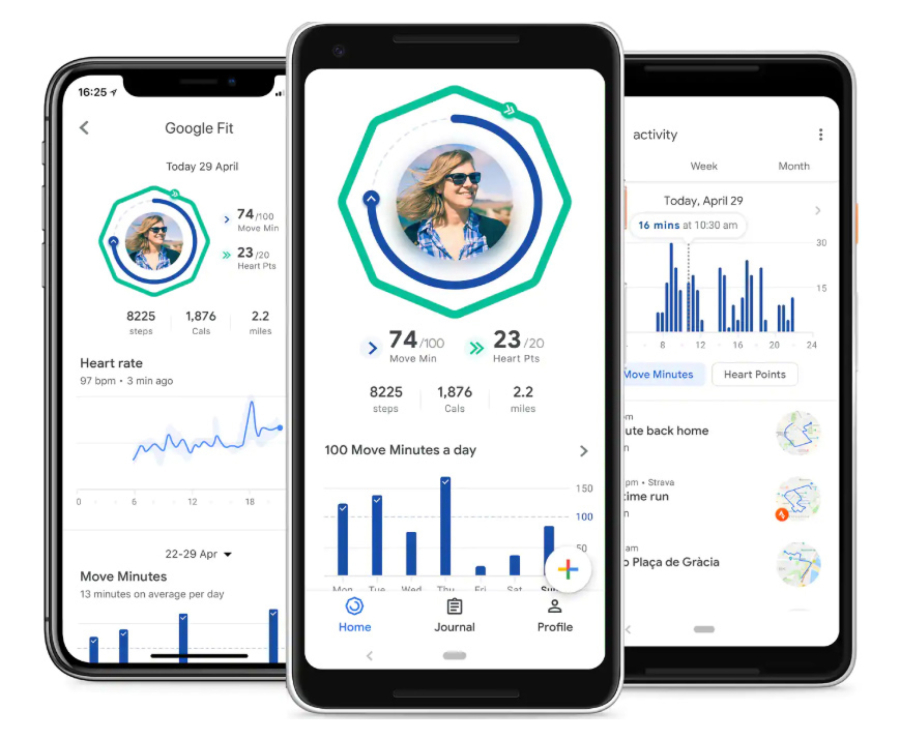Google’s trying to get you off the couch by simplifying the look of its Fit app to measure just two things: how much you move and how good that is for your heart.
The company redesigned the app in partnership with the American Heart Association and the World Health Organization to reflect both the amount that people move every day and the intensity of that movement. It also looks more like Apple’s Activity app.
Google’s revamp simplifies its tracking program, which it first launched in 2014 as a competitor to Apple’s HealthKit. Apple’s three-ring design — which tracks and sets goals for daily movement, exercise and time spent standing — has made the pursuit of closing those rings an obsession for some Apple Watch fans. So far, Google Fit hasn’t drawn the same sort of devotion.
Tapping the health and fitness market is a priority for Apple and Google, which both consider movement and health tracking as a key selling point for their wearable devices.



